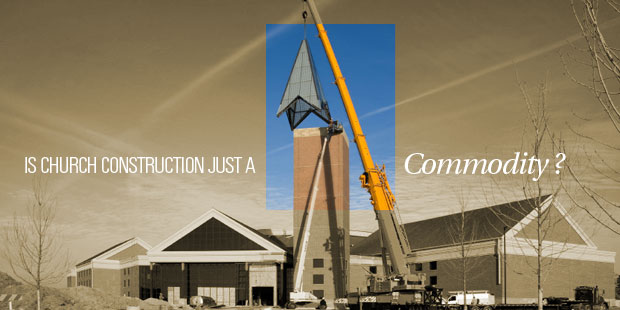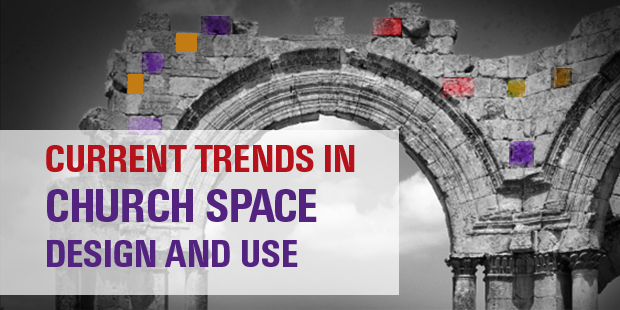
Design Intervention
You must be an active subscriber to view this premium content. Subscribe or Login.

Tags: Facilities, Mel McGowan, Physical space, Visioneering Studios

You must be an active subscriber to view this premium content. Subscribe or Login.

Tags: Facilities, Mel McGowan, Physical space, Visioneering Studios



“We have a local builder that builds warehouses, how different can that be to a church?”
“We want a ministry space specialist to help us plan and design our new facility, but any contractor can build it.”
” We are going to bid it out and just take the lowest price. All contractors and architects do the same thing.”
These are all comments that I have heard over the years. I understand how people formulate these perceptions….but I am convinced they are flawed. As a rule, the construction industry is seen as a commodity…and that is a shame as the best projects (quality construction, relationship, scope, value/cost) are almost always done in a collaborative environment with experts in their fields.
Let me ask you some questions:
1. If you are having an issue with your heart, are you going to rely on your Family Physician to be responsible for all of your care? They’re all doctors…Right?
2. If you drive a high performance European car, are you going to get it serviced by the corner gas station that usually only works on Fords? It’s just a car…Right?
3. When you need a professional audio/video/lighting package, do you call your local music store to get your HD cameras and to “fly” your subs? Aren’t we just getting some microphones and speakers?
You get my point…the answer, most of the time, to the above is NO…we call an expert in their field. OK…but isn’t any doctor an expert in all things medical? Why would you want a cardiologist vs. a general internist to care for your heart? Why do churches call WAVE and other similar firms when they need the best AVL systems to meet their ministry objectives. Why would you hire Plain Joe Studios to develop your branding, way-finding and environmental graphics? Same answer. And we could go on and on and on.
So, why do we think the local commercial architectural design firm or the local general contractor that builds houses, retail and warehouses is the best choice for our church development project? Where does the above logic go “off the reservation” of hiring an expert? Do we really think that all designers, architects and builders/developers are created equal?
Let me take it even one step further. You might have a local cardiologist who is “pretty good” at what they do. They may do several procedures a year and have a good reputation. But when you have an important situation…or are not sure your local resources can meet your goals and desires, you would most likely go to John Hopkins or the Mayo Clinic or you would go straight to the number one rated hospital for Cardiology & Heart Surgery which is the Cleveland Clinic (according to U.S. News).
Seems like a an interesting dichotomy. But I assure you….not all designers, builders, developers, AVL designers, car mechanics or doctors are created equal…nor do they all have the same expertise, specialization and experience. So get the RIGHT EXPERT to meet your needs…don’t settle and don’t look at them as a commodity, unless you only want a commodity product/service.
More about Tim Cool here or visit his website here.

Tags: Collaboration, Facilities, Tim Cool, Visioneering Studios



from an interview with Tony Morgan and Mel McGowan
You’re going to love this connection. Mel McGowan spent nearly a decade with the Walt Disney Company, he founded Visioneering Studios, a nationwide architectural and community development ministry which was awarded the 2008 Solomon Award for “Best Church Architect”. He has been named one of the top 25 cultural influencers by OC Metro magazine for his role as an “Architectural Evangelist”.
TONY: What’s a current trend that you’re seeing churches across the country begin to embrace?
MEL: I’d say that the biggest shift that I see is a move away from the paradigm of a “campus” (what I call the “Acropolis” model) to that of true community gathering place (the “Agora” model). Increasingly, both established megachurch pastors and next generation leaders are increasingly uncomfortable with the notion of a one-day-a-week, single use, internally oriented megachurch campus in which the parking lot sits empty the rest of the week. Like the ancient Acropolis, the faithful (who have made a prior commitment to “ascend” to the sacred space) are separated from the rest of the community.
The roots of the internally oriented “campus” paradigm come from monasteries and cloisters. To the outsider, this “Christian country club or compound” can seem intimidating at best and completely dissonant with the “Unchristian” perception of Jesus (as described in Gabe Lyon’s book). To the insider/Christian, it becomes to easy for this to facilitate an insular “Holy huddle” lifestyle.
With that said, some mistake the only alternative as an “anti-building” or underground house church approach. I tend to agree with my friend Chris Seay when he told me that real estate development and building can be one of the most incarnational acts that we can join God in. The trend that I see is rediscovering the role of ecclesia (Christ-centered community) as an “anchor tenant” in the heart of our cities and communities. I hesitate to use the “Third Place” term because it has been co-opted into the old campus model to mean repainting the lobby in Starbucks colors and serving coffee on Sunday morning. The real power in the term has roots in the ancient Greek agora (the predecessor to the Roman forum, Medieval piazza, and the American town square), where sacred space was always “in the mix” of where people (believers or not) “did life.”
This is what is keeping our five Visioneering Studios drinking out of God’s fire hydrant across the country is a “both/and” approach for churches that aren’t satisfied with putting up a “No Vacancy” sign at the front door of churches that are experiencing strong growth and evangelism. We believe that what this looks, tastes, and feels like should be different for each community.
TONY: How do you see this trend impacting the future of churches?
MEL: I tend to agree with Alan Hirsch that the “both/and” approach is generally the way to go. There was a time when the attractional “megachurch” model seemed like a generally accepted SOP (Standard Operating Procedure). I see a strong parallel with the idea of the church as a participant in authentic “Third Places” and the “Future Travelers” initiative described by Alan and Dave Ferguson in “On the Verge” in which fast-growing attractional megachurches are finding balance by integrating missional-incarnational approaches into their DNA.
In some ways, this is really less an emerging trend than the rediscovery of a “timeless truth” in that throughout the history of our species, sacred space was central to the physical space of community, from the tribal circle to temple courts to the great squares of Europe. It was really only after World War II and the rise of wrong-headed Modernist planning and zoning that cities not only forgot how to facilitate sacred/secular Third Places at their heart, but actually made them illegal by requiring separate land use zones for residential, retail, etc and making churches “beg for the forgiveness to exist” in other land use zones through the onerous Conditional Use Permit process.
I see this trend as relevant for the future of churches at all sizes. For the megachurches with large properties, a simple approach is to consider their parking “moats” as “greyfield redevelopment” potential sites in which synergistic community buildings (sports, commercial, educational, etc) can create “bridges” back to the community). For smaller churches no longer interested in fitting into the “Seeker Sensitive mega-campus mold”, we are finding that establishing themselves as a legitimate community development corporation, a non-profit arts group, or a quality gathering place (eg. Coffeehouse) opens doors to “Main Street”, in-line retail, and obsolete commercial sites opens doors to the city in the same way that the old model announced “we’ve arrived, so give us land use entitlements so that we can not pay property or sales tax, and be a ‘black hole’ in the social life of the city six days a week” closed doors.
If you are intrigued by Mel’s thinking, you may want to pick up one of his books. He is the author of Design Intervention: Revolutionizing Sacred Space (2008) and Saving Suburbia: From the Garden to the City (2009). You can also follow his Travelogue at MelMcGowan.com.

Tags: Austin Stone, Facilities, Mel McGowan, National Community Church, New Life Christian Church, Saddleback Church, Visioneering Studios
Mr. Todd McMichen — 11/10/12 8:53 am
Tremendous article! The future is present and pastors will be required to possess a powerful vision. The day of building a building and we will grow is gone. Vision first, be brave, don't quit, and build to propel the vision.

